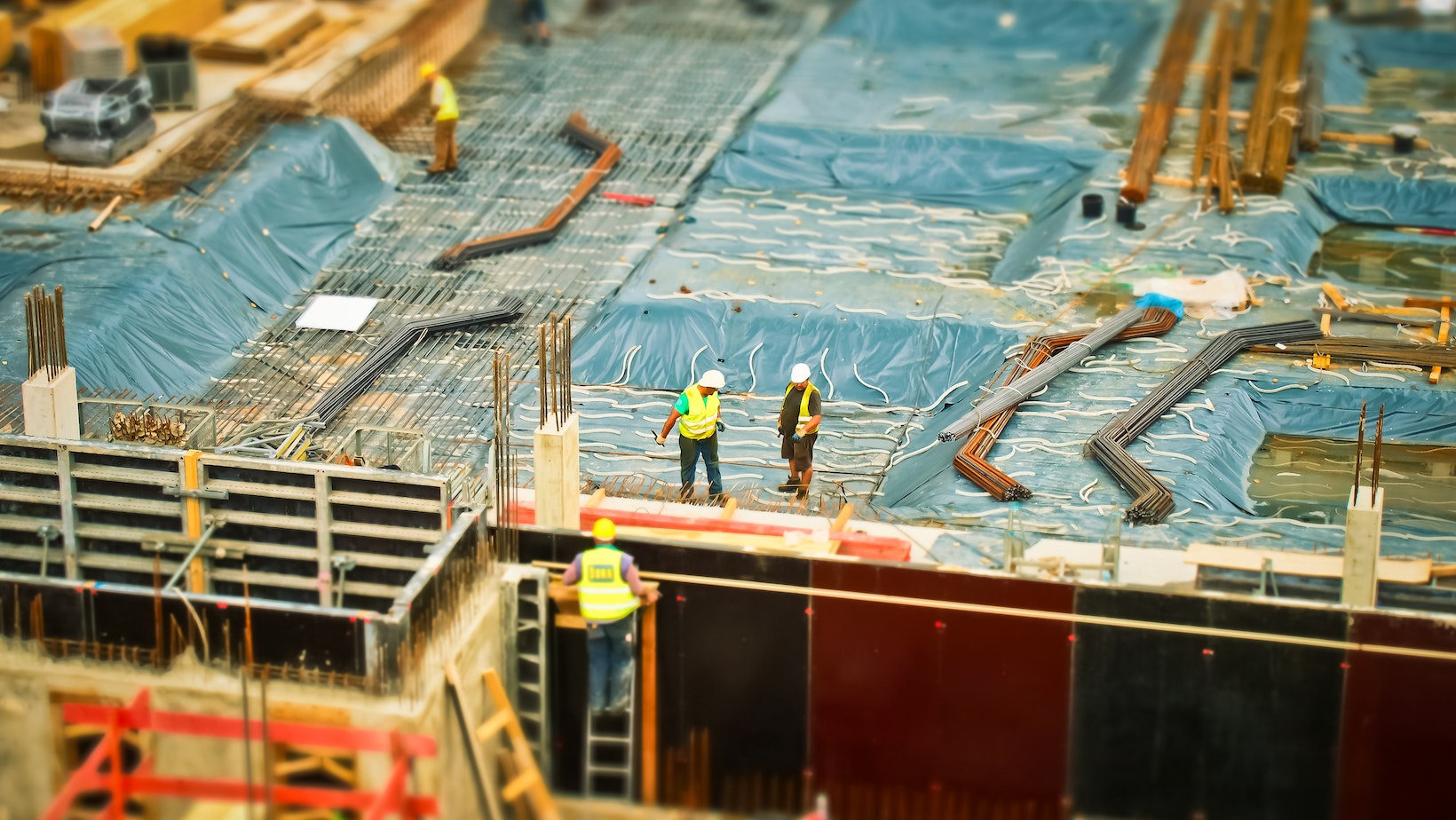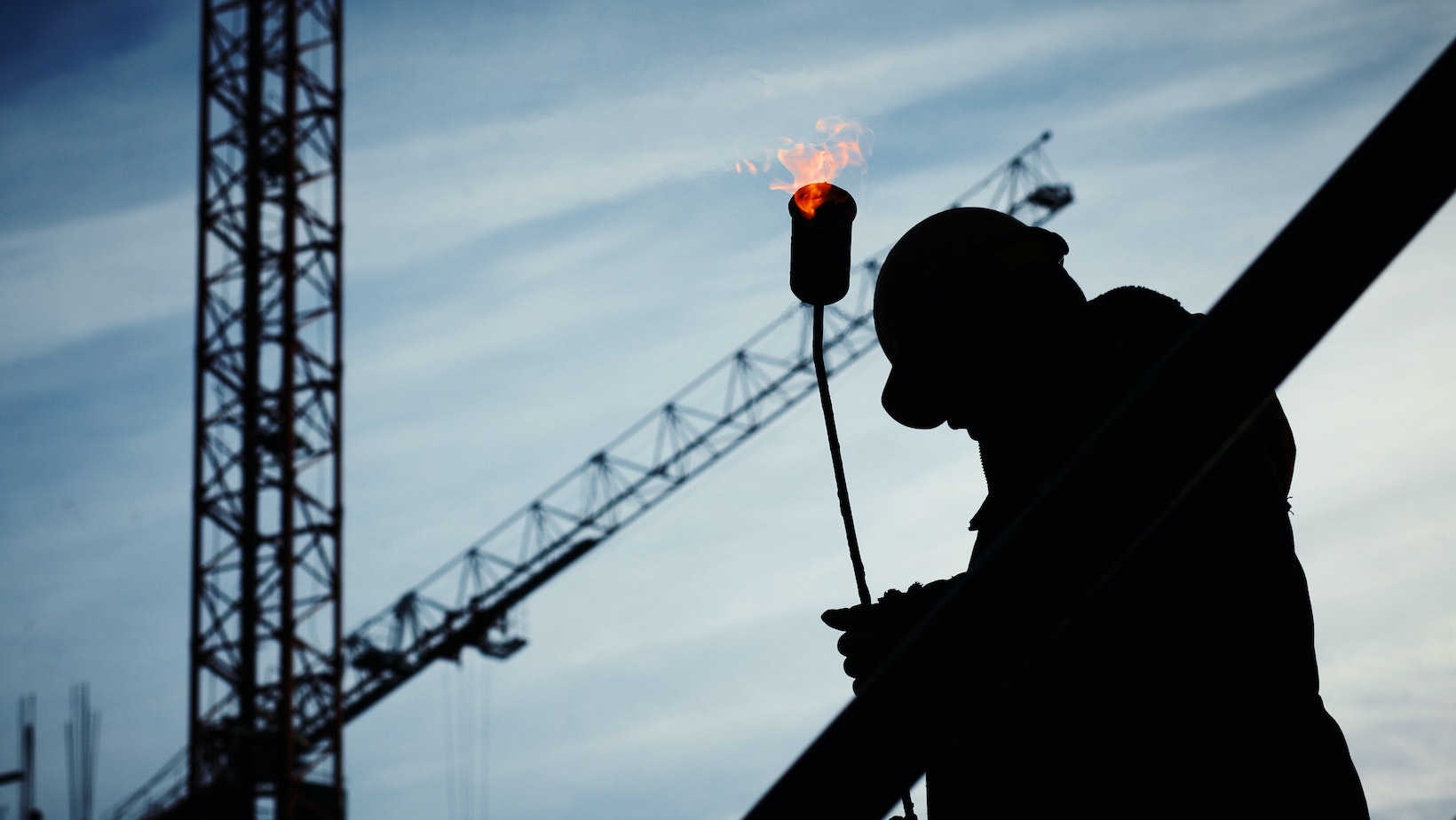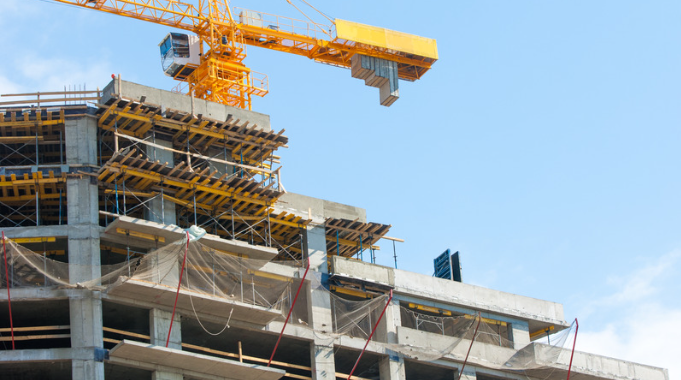Safety regulations for construction workers are put in place to protect the lives and wellbeing of those working in one of the most dangerous industries. Accidents can happen, such as a construction worker accidentally dropping a brick from a high scaffold. In such cases, it is imperative to understand the velocity of the falling object to take necessary safety measures. The velocity of a falling object depends on multiple factors such as the height of the scaffold, the weight of the object, and the force of gravity.
According to the safety regulations for construction workers, all objects should be securely fastened to prevent them from falling. All workers on construction sites are required to wear personal protective equipment (PPE) such as helmets, safety glasses, and harnesses. As prevention is always better than cure, following safety protocols and regulations can save lives and prevent accidents from taking place.
Pro tip: Repeat safety training regularly to keep the workers up to date with new regulations and information.
Protective Equipment
Working in construction is a dangerous job, as evidenced by the fact that a construction worker might accidentally drop a brick from a high scaffold. As such, it is essential to wear the right protective equipment and follow safety regulations when operating on a construction site. This paragraph will discuss how these regulations can help reduce the risk of accidents, and what protective equipment should be worn by construction workers.
Types of Protective Equipment Required for Construction Workers
Construction workers are required to wear a range of protective equipment to ensure their safety while on the job. The following are the primary types of protective equipment that a construction worker must wear:
- Hard Hats: To protect the head from falling debris, bumps or cuts.
- Eye and Face Protection: Safety glasses, goggles, and face shields protects construction workers from flying debris, sparks, and harmful chemicals.
- High-Visibility Clothing: This clothing is used to make construction workers easily visible, especially in low light conditions.
- Respiratory Masks: Protects the lungs from inhaling dust or airborne chemicals.
- Safety Gloves: For protecting hands from cuts, punctures, or other injuries.
- Safety Footwear: To protect feet from falling debris, electrical hazards or sharp objects.
In the case of a construction worker accidentally dropping a brick from a high scaffold, the velocity of the brick depends on the height from which it has fallen, and the force at which it hit the ground. Thus, the use of proper protective equipment is crucial, as it can help minimize the chances of accidents and reduce their severity.
Pro Tip: Safety guidelines should be followed strictly by construction workers and employers to prevent accidents in the workplace.

Importance of Wearing Safety Equipment While Working on a Construction Site
Wearing safety equipment is of utmost importance when working on a construction site to prevent injuries and fatalities. Construction sites are among the most hazardous work environments, and protective equipment is critical in mitigating the risks.
Here are some essential protective equipment that construction workers should use on site:
- Hard hats: These are essential to protect the head from falling objects such as bricks, rocks, and debris. For instance, if a construction worker accidentally drops a brick from a scaffold that is 10 meters high, it will hit the ground with a velocity of approximately 98.07kph.
- Safety glasses/goggles: These protect the eyes from flying debris and dust.
- Respirators: For areas with poor ventilation, respirators protect from inhaling harmful chemicals and dust.
- Work gloves: These protect the hands when handling sharp objects, such as glass or metal.
- High visibility clothing: This is especially important for those working in low light conditions or where there’s little visibility.
Wearing safety equipment not only helps to prevent injuries but also makes construction sites a safer place to work.
Safety Guidelines
Construction work is a highly technical and potentially hazardous job. To keep workers safe and ensure that all construction projects are carried out in line with safety regulations, it is essential to follow strict safety guidelines. This article will discuss the safety guidelines that construction workers should follow to minimize the risk of accidents and injury.
Fall Protection Measures
Fall protection measures are critical safety guidelines for construction workers that can prevent injuries and fatalities from falls, such as if an object is accidentally dropped from a height.
Some essential fall protection measures for construction workers include:
- Scaffolding safety: always ensure that scaffolding is installed correctly and set on stable ground.
- Safety harnesses: all workers who work at heights should wear a safety harness that is fitted correctly and is anchored to a secure point.
- Safety netting: safety nets should be installed wherever possible to catch falling objects or to protect workers from falls.
As for the velocity of a brick dropped from a high scaffold, this depends on the height of the scaffold and the acceleration due to gravity (9.81 m/s²). The velocity can be calculated using the formula: Vf = Vi + at (where Vf is final velocity, Vi is initial velocity, a is acceleration, and t is time). However, the focus should be on preventing such accidents from happening by following proper safety regulations in the first place.
Pro tip: Never compromise on safety measures, and always follow the relevant safety regulations to prevent workplace accidents.
Scaffolding Safety Measures
Scaffolding safety measures are critical to ensure the safety and well-being of construction workers while working at high elevations. Following safety guidelines and regulations can help prevent accidents like a worker accidentally dropping a brick from a high scaffold. The velocity of the falling brick can be calculated using the formula- v= √(2 x g x h) where g is acceleration due to gravity and h is the height of the scaffold.
While measures can be taken to protect workers from falling objects, it is equally important to follow safety regulations to prevent accidents, including the use of appropriate personal protective equipment, proper installation and maintenance of scaffolding structures, and regular inspections of equipment and work areas. It is also necessary to provide adequate training and supervision to ensure that workers understand and comply with safety guidelines.
Pro tip: Always prioritize the safety of workers in any construction project to avoid costly accidents and legal liabilities.
Electrical Safety Guidelines
Electrical safety guidelines aim to minimize the risk of injury or death related to electrical hazards. While these guidelines are specific to electrical work, they can also apply to construction sites and other workplaces.
Here are some key guidelines to follow:
- Always assume that wires are live and stay clear of any electrical hazards.
- Ensure all electrical equipment is properly grounded or double-insulated.
- Use the right tools for the job and insulate them properly.
- Keep water away from electrical equipment or wiring.
- Wear personal protective equipment (PPE), including insulated gloves, goggles, and footwear.
In the scenario where a construction worker accidentally drops a brick from a high scaffold, the velocity of the brick will depend on the height of the scaffold and the gravitational force. It is critical to follow all safety regulations and use proper PPE to prevent this type of accident from happening.
Pro tip: Always stay up to date on the latest electrical safety guidelines and regulations to ensure the safety of yourself and others in the workplace.
Importance of Training
It is essential for construction workers to follow safety regulations in order to avoid any catastrophic accidents. Training is the key to ensuring that workers are aware of the safety measures that need to be taken, as well as the potential risks associated with construction work. In this article, we will focus on the importance of proper training to reduce the risk of accidents occurring, such as when a construction worker accidentally drops a brick from a high scaffold.
Essential Training Required for Construction Workers
Construction work is a challenging and hazardous job, with various safety hazards present on-site. Therefore, proper and essential training is necessary for the construction workers to ensure their safety and that of their colleagues. While working on construction sites, workers must abide by safety regulations and guidelines to avoid fatal accidents. Drop hazards, such as a worker accidentally dropping a brick from a high scaffold, can endanger personnel below and cause severe injuries.
The following essential training for construction workers is mandatory:
- Occupational Safety and Health Administration (OSHA) training teaches workers how to operate equipment safely.
- Construction safety training focuses on fall protection, electrical safety, and hazard communications.
- Personal Protective Equipment (PPE) training teaches workers how to wear and maintain equipment like hard hats, safety glasses, and gloves.
- Safety hazard recognition training instructs workers to identify potential hazards and take necessary precautions.
All these training are imperative for construction workers to carry out their jobs smoothly and safely. Workers must follow safety guidelines to prevent drop hazards like a falling brick from a high scaffold. Incidents like this could be catastrophic and cause fatal accidents, emphasizing the need for safety training for all construction workers.
Pro tip: Employers must ensure all their workers comply with safety regulations and provide them with safety training; this saves lives and time.

Benefits of Training Programs for Workers and Employers
Training programs for workers and employers are crucial for ensuring a safe and productive workplace. Construction workers, in particular, face numerous hazards on the job, and safety training can prevent accidents and injuries.
For instance, in a scenario where a construction worker accidentally drops a brick from a high scaffold, knowing the velocity of the falling object can help assess the potential danger to workers and bystanders. Safety training programs can teach workers how to calculate the velocity of falling objects and the appropriate safety measures to take in case of accidents.
Benefits of training programs for workers and employers:
- Improved safety and reduced accidents and injuries.
- Increased productivity and efficiency due to better skills.
- Better communication among workers and management.
- Increased employee satisfaction and retention.
Training programs are a worthwhile investment for companies looking to protect their employees, enhance their skills, and improve their bottom line.
Periodic Safety Training Programs
Periodic Safety Training Programs are crucial for construction workers to learn and understand the latest safety regulations and techniques to prevent accidents from happening. Accidents can occur anytime, and they often cause serious injuries or even fatalities on construction sites. Workers need to be equipped with the knowledge and skills to identify potential hazards and take the appropriate measures to mitigate them.
Let’s say a construction worker accidentally drops a brick from a high scaffold; the velocity of the brick can significantly impact the severity of the accident. Knowing how to handle equipment safely and follow proper procedures can minimize the risk of fatal accidents like this from occurring. Regular safety training ensures that workers are up-to-date with the latest safety standards, thereby creating a safer working environment.
Construction sites come with a lot of potential hazards and accidents, which is why it is important that safety regulations are enforced to protect the workers. This will help to minimize the risk of injury, or worse, death. This section will look at the importance of enforcing safety regulations and the role of a construction worker in upholding them.
Role of OSHA in Enforcing Safety Regulations
OSHA, or the Occupational Safety and Health Administration, plays a critical role in enforcing safety regulations in the workplace, including those for construction workers who face various hazards daily. OSHA’s regulations are designed to ensure worker safety and reduce the risk of accidents such as a construction worker accidentally dropping a brick from a high scaffold.
In situations like this, OSHA will investigate the incident and determine whether the worker was following proper safety procedures and regulations. If not, OSHA may issue a citation or fine to the employer, and also require them to rectify the situation to prevent it from happening again.
It’s important to remember that OSHA is not just a regulatory body that issues penalties, but is also an organization that provides training and support to both employers and workers to improve workplace safety. The velocity of the falling brick would be crucial for OSHA’s investigation in determining the potential risk and nature of the accident, and how to prevent similar incidents from occurring in the future.
Pro Tip: Employers should prioritize workplace safety by following OSHA regulations and providing adequate training to workers, ultimately reducing the risk of accidents and creating a safer work environment.
Construction Industry’s Compliance and Organizational Efforts
The construction industry, like many others, has compliance and organizational efforts in place to ensure the safety of workers on job sites. One of the most critical compliance measures for this industry is the enforcement of safety regulations to prevent accidents like a worker accidentally dropping a brick from a high scaffold.
Here are some safety regulations that construction workers should follow to prevent such accidents:
- Proper training for all workers operating in hazardous conditions
- Inspection of job sites, tools, and equipment for safety compliance
- Regular maintenance and repair of machinery and equipment
- Use of personal protective equipment, such as hard hats, safety goggles, and gloves
The velocity at which a brick falls from a high scaffold would depend on various factors, including the height of the scaffold, air resistance, and the weight of the brick. However, it is essential to prevent such accidents by strictly following safety regulations on construction sites.
Consequences of Violating Safety Regulations: Fines and Penalties
Violating safety regulations can have severe consequences, including fines and penalties. One such example for construction workers is when they accidentally drop a brick from a high scaffold, which can result in severe injuries or even death.
The velocity, especially in the case of a falling object, can be calculated using a simple formula: V=√(2gh) where V is the velocity, g is acceleration due to gravity (9.8 m/s2), and h is the height from which the object falls. For instance, if the scaffold is 10 meters high, the brick’s velocity on impact will be ~14 m/s.
Therefore, violating safety regulations and not following proper procedures can lead to severe accidents that harm not only workers but others around them. It is essential to implement and enforce safety regulations strictly to avoid such incidents.
Pro tip: Regular training sessions on safety measures for the workers can reduce the likelihood of accidents and injuries.
